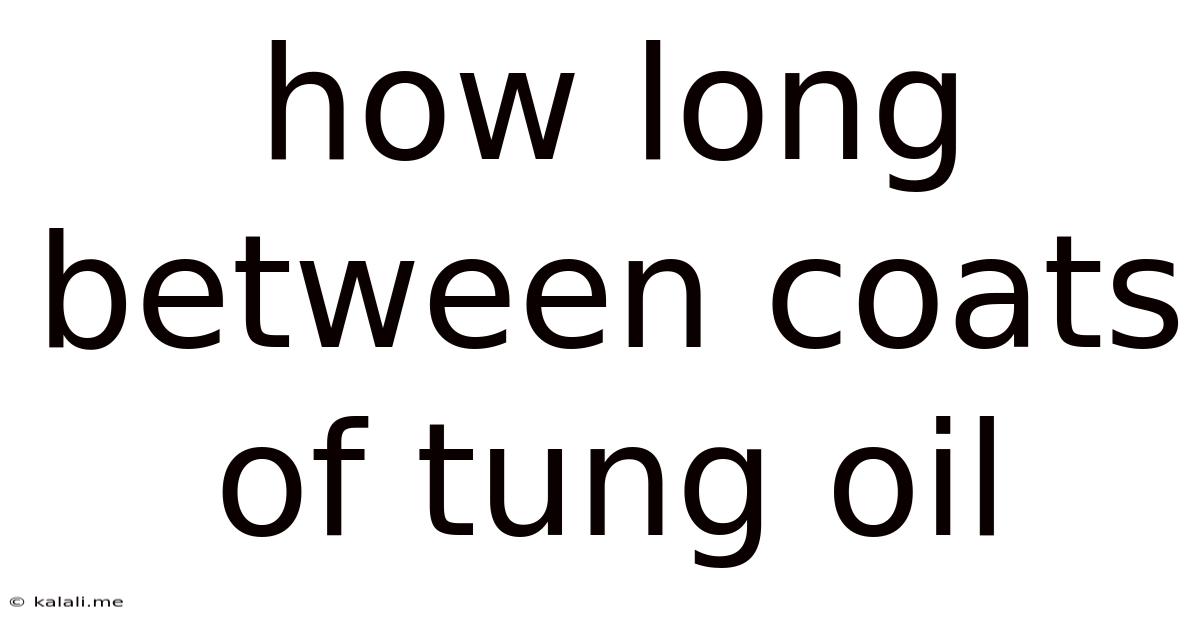How Long Between Coats Of Tung Oil
Kalali
Jun 10, 2025 · 3 min read

Table of Contents
How Long Between Coats of Tung Oil: A Comprehensive Guide
Tung oil is a popular choice for finishing wood, prized for its durability, water resistance, and beautiful, natural luster. But achieving a perfect finish requires understanding the drying process and knowing how long to wait between coats. This guide will delve into the specifics of tung oil drying times and offer tips for optimal results. Rushing the process can lead to a sticky, uneven finish, while waiting too long can create adhesion problems between coats.
Understanding Tung Oil Drying Times:
The drying time for tung oil is significantly influenced by several factors:
-
Type of Tung Oil: Pure tung oil takes considerably longer to dry than tung oil blends or modified tung oils. Modified tung oils often contain added driers (like cobalt or manganese) that speed up the drying process. Always check the manufacturer's instructions for specific drying recommendations.
-
Environmental Conditions: Temperature, humidity, and air circulation all play a crucial role. High temperatures and low humidity generally accelerate drying, while cool, damp conditions slow it down. Good air circulation helps to remove solvents and moisture, aiding the curing process.
-
Number of Coats: Subsequent coats will generally dry faster than the initial coat because the previous layer provides a better surface for adhesion and creates a more uniform film.
Typical Drying Times Between Coats:
While there's no single definitive answer, here’s a general guideline for drying times between coats of tung oil:
-
Pure Tung Oil: Allow a minimum of 24-72 hours between coats. In humid or cool conditions, you may need to extend this to 72-96 hours. This extended time allows for complete penetration and polymerization.
-
Tung Oil Blends/Modified Tung Oils: These typically dry much faster. A waiting period of 12-24 hours is usually sufficient, but again, always refer to the manufacturer's instructions.
Signs of Proper Drying:
Before applying the next coat, carefully examine the previous coat. It should be dry to the touch and not feel tacky or sticky. A slightly dusty surface is a good sign that it's ready for the next coat. If there's any tackiness, wait longer before continuing.
Tips for Faster Drying (with Pure Tung Oil):
While pure tung oil's slow drying time is a key part of its durability, you can gently influence the process:
-
Thin Coats: Applying thin coats allows for better penetration and faster drying. Multiple thin coats are better than one thick coat.
-
Improved Ventilation: Work in a well-ventilated area, or use fans to circulate air.
-
Higher Temperatures: If possible, work in a warmer environment.
-
Wipe-On Application: This method ensures thinner coats and better penetration compared to brushing.
Important Considerations:
-
Curing vs. Drying: Remember that drying and curing are distinct processes. Drying refers to the surface becoming dry to the touch, while curing is the complete chemical hardening of the oil, which can take weeks or even months.
-
Safety Precautions: Tung oil can cause skin irritation. Always wear appropriate gloves and eye protection, and work in a well-ventilated area.
By understanding the factors influencing drying time and carefully observing the condition of the previous coat, you can ensure a perfect, durable, and long-lasting tung oil finish for your woodworking projects. Remember to always consult the manufacturer's instructions for the specific product you're using.
Latest Posts
Latest Posts
-
How To Write 2 4 Billion In Numbers
Jul 01, 2025
-
I Want To Go Where The Thunder Dont Roar Lyrics
Jul 01, 2025
-
How Many Minutes Are In 900 Seconds
Jul 01, 2025
-
How Many 24 Oz In A Gallon
Jul 01, 2025
-
How Many Blades Of Grass Are There In The World
Jul 01, 2025
Related Post
Thank you for visiting our website which covers about How Long Between Coats Of Tung Oil . We hope the information provided has been useful to you. Feel free to contact us if you have any questions or need further assistance. See you next time and don't miss to bookmark.